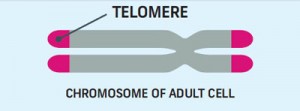If presented with the fountain of youth, would you drink?
People have entertained the idea of immortality across time. Greek mythology tells of the phoenix, a bird capable of rebirth. The prominence of comics as a publication medium early in the twentieth century gave rise to a slew of superheroes capable of super-regeneration and longevity, like Superman and Wolverine. Even Lord Voldemort [SPOILER: highlight to reveal] went through the trouble of creating seven horcruxes to secure a strong hold of the living realm. Why are we fascinated with the concept of immortality?
The motivation to discuss immortality is probably related to people’s natural aversion to death and aging. There are plenty of cosmetic products and procedures that generate a lot of revenue by reversing the effects of aging, such as Botox. But what if instead of merely combating the symptoms of aging, you could eliminate it completely?
Certain examples of non-aging exist in nature. Hydras have been observed to not age. While not quite immortal, lobsters have shown to not be strongly affected by age. What can we learn from these organisms?

In DNA replication, DNA polymerase takes up a short space on the sequence that it doesn’t copy, like painting itself into the corner of a room. Image from ClipartHeaven.
At the ends of our DNA strands are sections called telomeres – repeats of nucleotides that prevent degradation of the gene as it replicates over time. Every time a cell divides, the telomeres get shorter. After many replications at a point called the Hayflick limit, the telomeres reach a critically short length and the cell stops dividing. In a way, telomere length is like a biological clock that can be used to determine lifespan.
Cells also produce an enzyme called telomerase, which adds nucleotide bases to the ends of telomeres. However, the rate of telomerases’ repair of the telomeres is overcome by the rate of cell division, so telomeres continue to grow shorter and the cell ages.




Telomerase. Here, “senescence” means “old age”. Images from the National Institutes of Health.
So does the answer to immortality lie in telomerases? Not quite. High telomerase activity is detectable in more than 90% of malignant tumours. The action of telomerase can provide cells with the capacity to infinitely replicate – a defining factor of tumour cells.
So where does this bring us? We aren’t any closer to living forever, but average life expectancy has risen over time, owing to advancing medicine and lower infant mortality rates. Still, it is just as interesting to ponder how one might spend lottery winnings as it is amusing to think about what one would do with unlimited time. Perhaps the search shouldn’t be for biological immortality, but to leave an immortal legacy. As A. A. Milne had said, “I suppose that every one of us hopes secretly for immortality; to leave… a name behind him which will live forever in this world.”
– Trevor Tsang





